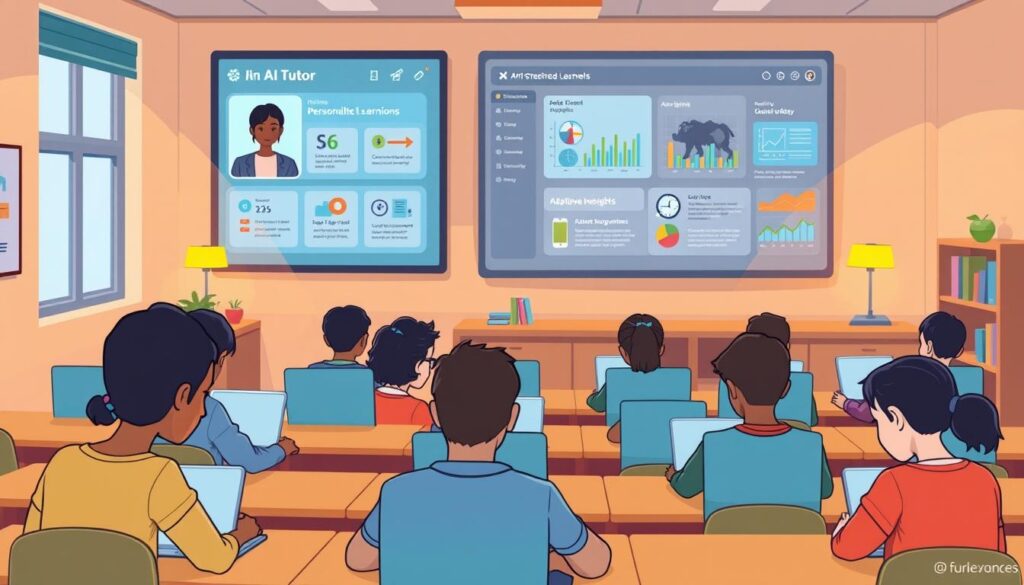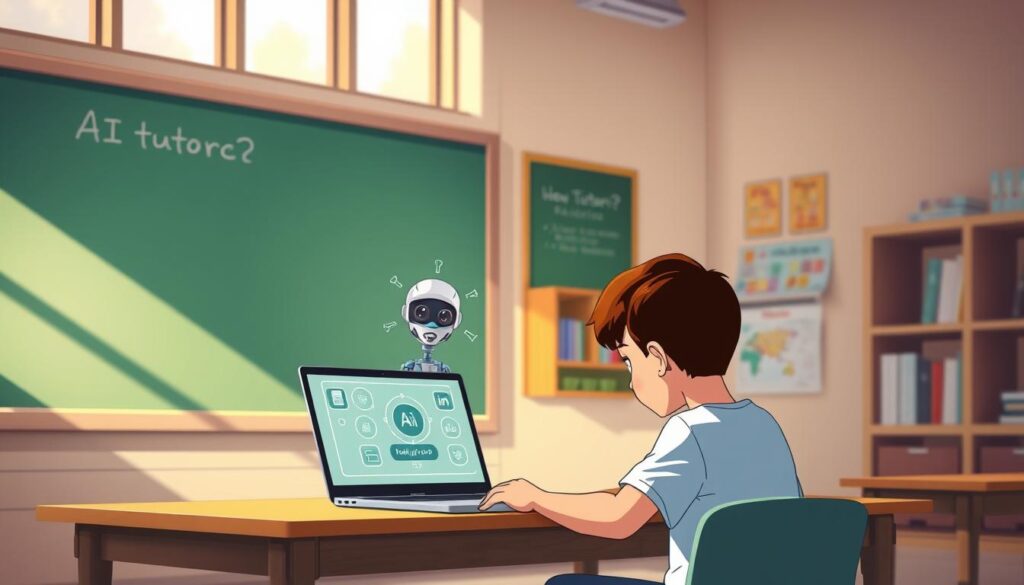In today’s fast-evolving education landscape, AI-Assisted Tutoring is revolutionizing how students learn and engage with academic material. By leveraging advanced technology, these platforms create a learning experience that is both interactive and tailored to individual needs, ensuring that every student can thrive.
Imagine having access to a tutor who is available 24/7, adapting lessons in real-time to match your pace and interests. This is exactly what AI-powered tutoring offers. Whether you’re struggling with math problems or looking to improve your language skills, these intelligent systems provide personalized learning paths that make education more accessible and effective.
What makes this approach even more compelling is its ability to support both students and educators. For students, it means round-the-clock access to resources that enhance engagement and understanding. For educators, it offers valuable insights and tools to better support their students, creating a more dynamic and responsive learning environment.
As education continues to embrace innovation, the integration of AI into tutoring is setting a new standard for adaptive learning. With its ability to analyze performance, adjust difficulty levels, and provide timely interventions, AI is not just a tool—it’s a transformative force in the world of education. The future of learning is here, and it’s more accessible than ever.
Understanding AI-Assisted Tutoring: A New Era in Learning
Education is undergoing a transformation, and AI tutors are at the forefront of this change. These intelligent systems are reshaping how we approach teaching and learning, offering solutions that cater to individual needs like never before.
Defining AI Tutors and Their Role in Modern Education
An AI tutor is a sophisticated system designed to provide one-on-one learning experiences. These systems use advanced algorithms to analyze a student’s performance and adapt content accordingly. For instance, platforms like Duolingo and Khan Academy have successfully integrated AI to offer personalized learning paths, making education more accessible and engaging.
Interactive and Adaptive Learning Experiences
What makes AI tutors stand out is their ability to create interactive and adaptive learning environments. They engage students through gamified modules and real-time quizzes, enhancing motivation and retention. Adaptive learning capabilities allow these systems to adjust their approach based on a student’s progress, ensuring that the content remains relevant and challenging.
Immediate feedback is another critical feature of AI tutors. By providing instant insights, these systems help students identify areas for improvement and track their progress over time. This seamless interaction creates a more dynamic and effective learning experience.
As you explore the potential of AI-assisted tutoring, consider how these systems can empower both students and educators. They not only offer personalized learning but also provide teachers with valuable data to refine their teaching strategies. The future of education is becoming more inclusive and effective, thanks to the innovative power of AI.
Key Benefits and Features of AI Tutors
AI tutors bring a fresh approach to education, offering tools that make learning more effective and engaging. These systems are designed to adapt to each student’s unique needs, ensuring a tailored experience that fosters growth and understanding.
Personalized Learning Paths
One of the standout features of AI tutors is their ability to create personalized learning paths. These paths are tailored to each student’s strengths and weaknesses, ensuring that the content is always relevant and challenging. For example, if a student excels in algebra but struggles with geometry, the AI tutor can adjust the curriculum to focus more on geometric concepts. This level of customization is a significant step forward compared to traditional, one-size-fits-all teaching methods.
Real-Time Feedback and Adaptive Assessments
Another key benefit is the real-time feedback provided by AI tutors. As students work through problems or complete assignments, the system instantly identifies mistakes and offers corrections. This immediate feedback loop helps students learn and retain information more effectively. Additionally, AI tutors use adaptive assessments to evaluate student progress. These assessments adjust their difficulty based on how well a student is performing, ensuring that the challenges remain appropriate and effective.
By leveraging data analytics, AI tutoring platforms can track a student’s progress over time. This allows the system to make informed adjustments to the learning path, ensuring that the student stays on track to meet their educational goals. The combination of personalized learning paths, real-time feedback, and adaptive assessments makes AI tutors a powerful tool for improving academic performance and engagement.
Addressing Traditional Learning Challenges with AI
Traditional education often struggles with meeting the diverse needs of students, relying on a one-size-fits-all approach that can leave many learners behind. This outdated model can lead to disengagement and poor academic performance, as students receive limited individualized attention. However, AI-powered solutions are transforming this landscape by addressing these challenges head-on.
Overcoming One-Size-Fits-All Instruction
AI tutors are revolutionizing education by offering tailored learning experiences. These systems analyze each student’s strengths, weaknesses, and learning pace to create customized content. For example, a student excelling in algebra but struggling with geometry receives a curriculum focused on geometric concepts. This personalized approach ensures that every student receives the support they need to succeed.
Enhancing Engagement and Reducing Assessment Overload
AI tutors engage students through interactive methods like gamified modules and real-time quizzes, making learning more enjoyable and effective. Adaptive learning capabilities adjust the difficulty of assignments based on student performance, ensuring that the content remains challenging yet manageable. This approach not only enhances engagement but also reduces assessment overload by providing immediate feedback and allowing students to track their progress.
Empowering Educators with Data-Driven Insights
AI tutoring platforms provide educators with valuable data and insights, enabling them to refine their teaching strategies. By automating tasks like grading and feedback, teachers can focus on more critical aspects of education. Additionally, AI systems identify learning gaps and at-risk students with high accuracy, allowing for timely interventions. This empowers educators to create a more dynamic and responsive learning environment.
How to Provide AI-Assisted Tutoring and Personalized Learning Modules
To integrate AI-assisted tutoring into your educational framework, follow these organized steps designed for educators and institutions. This guide offers a clear path to implementing effective, technology-driven learning solutions.
Step 1: Assess Needs and Choose the Right Platform
Begin by evaluating your students’ needs and selecting a reliable AI tutoring platform. Popular options include DreamBox and Curriculum Associates, which offer tailored resources for educators. These tools are designed to support your instructional goals with adaptive technology.
Step 2: Develop Customized Lessons
Use the AI system to create personalized learning paths. The platform analyzes student performance data to adjust content, ensuring each lesson meets individual needs. For example, a student struggling with fractions might receive extra resources on that topic while advanced students get challenging material.
Step 3: Implement and Train
Once the platform is set up, train your team on its features. Educators should understand how to use the tool effectively. Communicate the benefits to students, explaining how AI enhances their learning experience through real-time feedback and adaptive challenges.
Step 4: Monitor Progress
Regularly review student progress using the platform’s analytics. These insights help you adjust instruction and identify areas where students may need additional support. Monitoring ensures the AI system is effectively meeting educational objectives.
Step 5: Maintain Feedback and Iteration
Encourage ongoing feedback from both educators and students. Use this input to refine the system, ensuring it remains effective. Regular updates and adjustments are key to sustaining a successful AI-assisted tutoring program.

By following these steps, educators can seamlessly integrate AI-assisted tutoring, providing students with a more engaging and effective learning experience. This approach not only enhances education but also empowers educators with valuable tools for student success.
Practical Applications in the Software Development World
The software development world is experiencing a significant shift with the integration of AI tutoring concepts. These tools are transforming how developers learn and work, offering a more efficient and adaptive approach to skill development.
Onboarding and Skill Development for Developers
AI tutors are revolutionizing the onboarding process for new developers. By providing interactive code reviews and real-time problem-solving assistance, these systems help developers improve faster. For example, an AI tutor can analyze a developer’s code, identify errors, and suggest optimizations, making the learning process more efficient.
Integrating AI Tutors into the Development Environment
Integrating AI tutors into the development environment involves selecting the right platform and ensuring compatibility with existing tools. Many development platforms now offer AI-powered tools that assist with debugging, code optimization, and even project management. These tools not only enhance technical training but also improve collaboration among team members.
Real-time feedback is one of the most significant advantages of AI tutors in software development. By providing instant insights, these systems enable developers to identify and fix issues quickly, leading to faster development cycles and higher quality code. Additionally, AI tutors can track a developer’s progress over time, offering personalized recommendations for skill improvement.
For example, an AI tutor can suggest relevant courses or resources based on a developer’s current projects and skill level. This personalized approach ensures that developers are always learning and growing, staying up-to-date with the latest technologies and best practices.
Overall, AI tutors are proving to be invaluable in the software development world, offering practical solutions for onboarding, skill development, and continuous improvement. By leveraging these tools, developers can enhance their capabilities, work more efficiently, and deliver better results.
Ethical Considerations and Data Privacy in AI Tutoring
As AI tutoring becomes more prevalent, ethical considerations and data privacy concerns take center stage. It’s crucial to address these issues with transparency and respect for users’ trust.
Ensuring Transparency and Fairness
Transparency is key to building trust in AI systems. Educators and developers must ensure that AI tutors operate fairly and without bias. Regular audits help maintain this fairness, ensuring that all students receive equal support. For instance, platforms like Knewton use data analytics to provide unbiased recommendations, fostering an inclusive learning environment.
Protecting Student Data and Privacy
Guarding student data is paramount. AI tutoring platforms must employ strong privacy measures, such as encryption and secure storage, to protect sensitive information. Policies like NDAs and compliance with regulations like FERPA ensure that student data remains confidential. Parents and educators can rest assured that the systems are designed with privacy in mind, minimizing risks of data breaches.

Human oversight is essential in AI-driven processes. Educators play a vital role in guiding the use of these tools, ensuring they complement teaching rather than replace it. Clear guidelines and policies help maintain trust among users, emphasizing that AI should support, not replace, human educators.
Regular updates and audits of AI systems are necessary to address ethical challenges. For example, companies implement strict data protection protocols and ethical AI development practices to overcome privacy concerns. This proactive approach ensures that AI tutoring remains a trusted and valuable educational resource.
The Expansion and Future of Personalized Learning Ecosystems
The future of education is unfolding into a dynamic, borderless landscape where technology and human needs intersect seamlessly. Imagine a world where every student can access resources tailored to their unique learning style, regardless of their location or background. This vision is becoming a reality through the expansion of personalized learning ecosystems.
Real-Time Language Translation and Global Collaboration
One of the most exciting advancements is real-time language translation, breaking down language barriers and enabling global collaboration. Students from different countries can now interact seamlessly, fostering a more connected and inclusive learning environment. This feature not only enhances cultural exchange but also opens up opportunities for students to learn from diverse perspectives.
Innovative Visualizations and Interactive Simulations
AI is transforming education through innovative visualizations and interactive simulations. These tools make complex concepts more engaging and easier to understand. For example, students can explore historical events through virtual reality or interact with 3D models of scientific phenomena. Such immersive experiences make learning more engaging and effective.
The Role of AI in Lifelong Learning
AI is not just limited to the classroom; it plays a crucial role in lifelong learning. As a constant learning companion, AI adapts to an individual’s evolving needs, offering relevant resources and support. Whether you’re acquiring new skills for your career or exploring personal interests, AI ensures that the learning path remains dynamic and responsive.
Looking ahead, the integration of diverse learning styles into future systems will ensure that every student’s preferences are accommodated. This strategic approach will create a more inclusive and effective educational environment. The future of education is dynamic, borderless, and tailored to individual needs, promising a transformative experience for learners worldwide.
Conclusion
AI tutoring is reshaping education by offering tailored learning experiences that optimize performance and engagement. By leveraging advanced technology, these systems provide personalized learning paths and real-time feedback, addressing the limitations of traditional, one-size-fits-all teaching methods.
Ethical considerations, particularly data privacy, are crucial as AI becomes more integrated into education. Educators and institutions are encouraged to embrace AI as a supportive tool, enhancing both the teaching process and student outcomes. The practical applications in educational and technical fields demonstrate AI’s versatility in fostering progress and continuous improvement.
Looking ahead, the future of learning is poised to be more dynamic and inclusive, with technology playing a pivotal role in shaping educational experiences. AI tutoring not only supports academic development but also empowers learners with the tools they need to succeed in an ever-evolving world.
